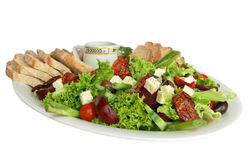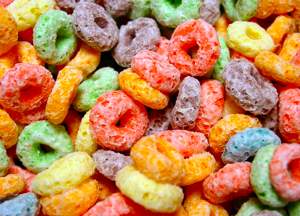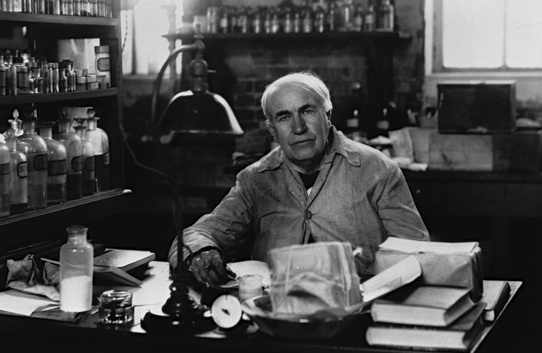 A revolution has turned around Central Alternative High School in Appleton, Wisconsin, and its ‘problem kids’, sent there from twelve area schools. Respect, achievement, and discipline prevail where once kids packed weapons, took drugs, and exhibited “terrible rudeness.”
A revolution has turned around Central Alternative High School in Appleton, Wisconsin, and its ‘problem kids’, sent there from twelve area schools. Respect, achievement, and discipline prevail where once kids packed weapons, took drugs, and exhibited “terrible rudeness.”
Before 1997 the teens ingested a slurry of behavior-altering chemicals that left them irritable, fidgety, and unable to concentrate. The culprit chemicals were not cocaine, speed, marijuana or heroin, but the industrial food additives found on grocers’ shelves.
Thanks to the simple elimination of commonly lurking food dyes, chemical flavorings, and preservatives, and the introduction of fresh nutritional foods for breakfast and lunch, the school boasts five years of zero drop-outs, zero expulsions, zero drugs, zero weapons possession, and zero fighting on campus.
The startling success at Central Alternative High (CAHS) led the state of Wisconsin to grant funds for the printing and distribution of packets of information about Appleton’s nutrition program to 500 of its alternative schools. Already, other area schools have dumped vending machines in favor of salad bars.
The Appleton Revolution
The Appleton experiment is part of a growing body of evidence that points to extensive chemical processing of children’s foods as a leading culprit in the 20 year surge of cases of hyperactivity (A.D.D./A.D.H.D.), depression and obesity in America’s children.
Consider the simple fact that synthetic food dyes which permeate kids’ food today — including even white marshmallows and toothpaste — are synthesized from petroleum. Scientists have found that many people are sensitive to these petrol-based chemicals, which can trigger a wide number of behavior, learning, and health problems by interfering with electrical functioning of neurotransmitters and synapses of the brain.
Since 1976, the nonprofit Feingold Association has achieved amazing results helping families whose children are diagnosed with hyperactive disorders. The Feingold program is a diet free of synthetic colors and flavors, and the preservatives BHA, BHT and TBHQ.
Barbara Stitt was inspired in the 1970’s seeing the effects of the Feingold program: “The kids would just change.” But earlier than that, in 1963, while working as a parole officer, Stitt discovered a book that dramatically improved her own deteriorating health. She decided to teach its nutritional principles to her 112 parolees and then followed them for 12 years. After they changed their diet, “They looked different, felt different, and sounded different.” 89% did not get back into trouble — a rate unheard of in prison recidivism.
Stitt and her husband, a biochemist, own Natural Ovens, the Manitowoc, Wisconsin bakery that launched the Appleton revolution. They underwrote the $20,000 annual cost for the special breakfast and lunch program and provided 3 chefs to prepare whole foods like salads, old fashioned recipes, and whole grain breads that include Omega-3 oils (“brain food”) found in Flax seed. The Natural Ovens menu is served every day of the year but two, which are designated ‘Junk Food Days’.
Natural Ovens’ ‘Junk Food Days’
 The students eat all junk for breakfast and lunch. At 2:00 PM they write down how they are feeling in their bodies. The next morning they record how they slept and how they felt at home. “It is exciting for the teachers,” says Stitt. After dosing themselves with junk, “The kids can’t spell, can’t finish a sentence. The pulse rate for second graders doubles. The experience opens the kids’ eyes. They see that what they put in their mouths effects their behavior.”
The students eat all junk for breakfast and lunch. At 2:00 PM they write down how they are feeling in their bodies. The next morning they record how they slept and how they felt at home. “It is exciting for the teachers,” says Stitt. After dosing themselves with junk, “The kids can’t spell, can’t finish a sentence. The pulse rate for second graders doubles. The experience opens the kids’ eyes. They see that what they put in their mouths effects their behavior.”
Stitt’s work in Wisconsin schools is a continuation of the late Dr. Feingold’s mission. “These are our children. This is our future. I don’t think there’s anything more important facing us today. It is taking a toll we cannot afford.”
“Kids this year are calmer, more rational. I had thought about retiring but I’ve decided I’m having too much fun.” – Appleton science teacher, Dennis Abrahm
When people argue against the higher cost of a nutritious lunch, CAHS principle, LuAnne Coenen doesn’t buy it. She says the savings are high. “We don’t have the trash, the graffiti, the need for high security. One kid incarcerated costs the state $20,000 for one year. Our lunches cost the school 50 cents per student per day (above the cost of typical lunches).”
After years of excusing erratic behavior with, ‘Its just hormones,’ or ‘Middle-schoolers can’t sit still,’ the Appleton experiment uncovers a more insidious cause. Greg Bretthauer, Dean of Students at CAHS exclaims, “If they don’t come doped up on bad food, by God, they have the chance to learn something.” Grades, test scores, and achievement are all up at CAHS. Responding to such growing evidence, the Los Angeles school district — the nation’s largest — will eliminate soda vending machines from all of its buildings beginning January 1, 2003.
A Feingold Lunch Box:
peanut butter, tuna or egg salad, certain potato chips, Snack Pack chocolate pudding, fruits, Juicy Juice
______________________________
The Appleton revolution hails a new way to treat A.D.H.D. kids, and supports the theory that there may be no such disorder at all, but just an explosion of symptoms caused by ingesting a witch’s brew of chemicals in everyday products.
To learn more information, or to read chapter one of Why Can’t My Child Behave,
visit the Feingold Association Web site.
Building the Case For Nutrition Reform
 • The Center for Science in the Public Interest released a report in 1999 concluding that in 17 of 23 studies evidence strongly indicates that for some children behavioral disorders are caused or aggravated by certain food additives and artificial food colors. The Center joined a group of physicians and scientists urging the Department of Health and Human Services to advise parents and doctors to try changing the diets of children with ADHD before placing them on stimulant drugs like Ritalin, with their side effects. A NIH report suggested that the government “consider banning synthetic dyes in foods consumed widely by children.” (“Diet, A.D.H.D. and Behavior,” www.cspinet.org)
• The Center for Science in the Public Interest released a report in 1999 concluding that in 17 of 23 studies evidence strongly indicates that for some children behavioral disorders are caused or aggravated by certain food additives and artificial food colors. The Center joined a group of physicians and scientists urging the Department of Health and Human Services to advise parents and doctors to try changing the diets of children with ADHD before placing them on stimulant drugs like Ritalin, with their side effects. A NIH report suggested that the government “consider banning synthetic dyes in foods consumed widely by children.” (“Diet, A.D.H.D. and Behavior,” www.cspinet.org)
• The New York City Board of Education, in 1979, instituted dietary changes in 803 schools that raised test scores a whopping 15 percentile points by gradually removing synthetic colors and flavors and some preservatives, and by reducing sugar in the foods served at breakfast and lunch. Before the change, test scores ranked in the 39th percentile. Four years later the students scored in the 55th percentile. (International Journal of Biosocial Research, Vol. 8, No. 2, 1986.)
• A new double-blind University of Oxford study published in the British Journal of Psychiatry (2002) reported that over a nine month period half of a group of 231 adult male prisoners were given vitamins, minerals and Omega-3 fatty acids. They committed 26.3% fewer offenses than in previous months and 40% fewer violent offenses. The men who received the placebo pills continued to behave as they had all along. The Researchers hailed the improvements as ‘huge’.
• The Feingold Association newsletter, Pure Facts, described 10 year-old Bradlea Fletcher’s school science fair project on the effect of food dyes. She took 8 mice and ran them through a maze for 6 days. Then she divided them in half and added 2 drops of yellow food dye to one cage’s water dish, then timed them for 6 days more. The mice with the dyes were 50% slower than in earlier runs, while the normal mice improved their time by 25%. Additionally, the tainted mice became harder to catch and aggressive — one even bit her, while the normal mice became tamer.
Photo credit: Colored cereal by ppdigital via morguefile.com
 “If he listened more to the inner voice and less to the clamorous voice of the external world, he would find a strength and a courage that would insure him against discouragement.”
“If he listened more to the inner voice and less to the clamorous voice of the external world, he would find a strength and a courage that would insure him against discouragement.”




























 The students eat all junk for breakfast and lunch. At 2:00 PM they write down how they are feeling in their bodies. The next morning they record how they slept and how they felt at home. “It is exciting for the teachers,” says Stitt. After dosing themselves with junk, “The kids can’t spell, can’t finish a sentence. The pulse rate for second graders doubles. The experience opens the kids’ eyes. They see that what they put in their mouths effects their behavior.”
The students eat all junk for breakfast and lunch. At 2:00 PM they write down how they are feeling in their bodies. The next morning they record how they slept and how they felt at home. “It is exciting for the teachers,” says Stitt. After dosing themselves with junk, “The kids can’t spell, can’t finish a sentence. The pulse rate for second graders doubles. The experience opens the kids’ eyes. They see that what they put in their mouths effects their behavior.” •
• 











